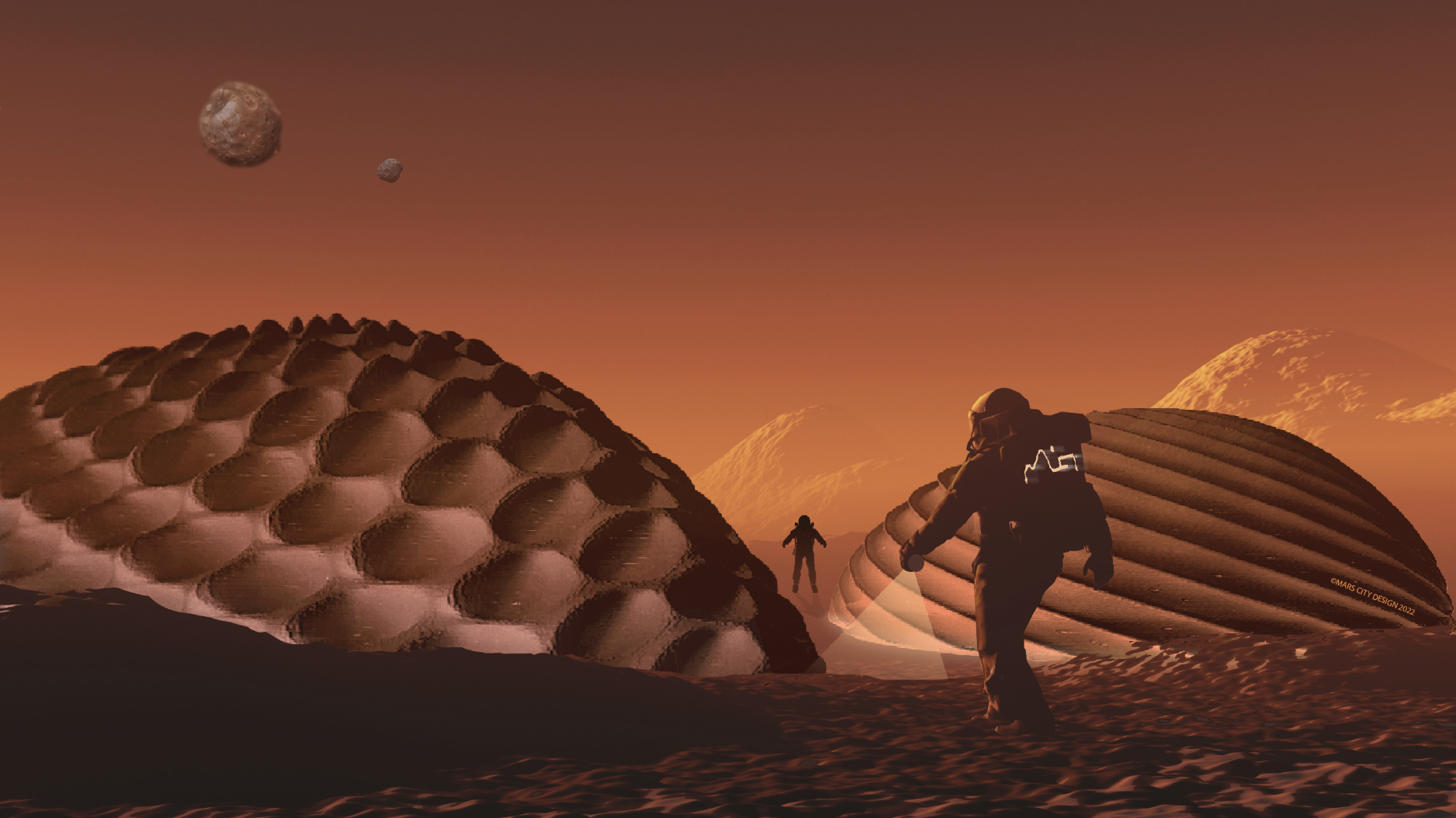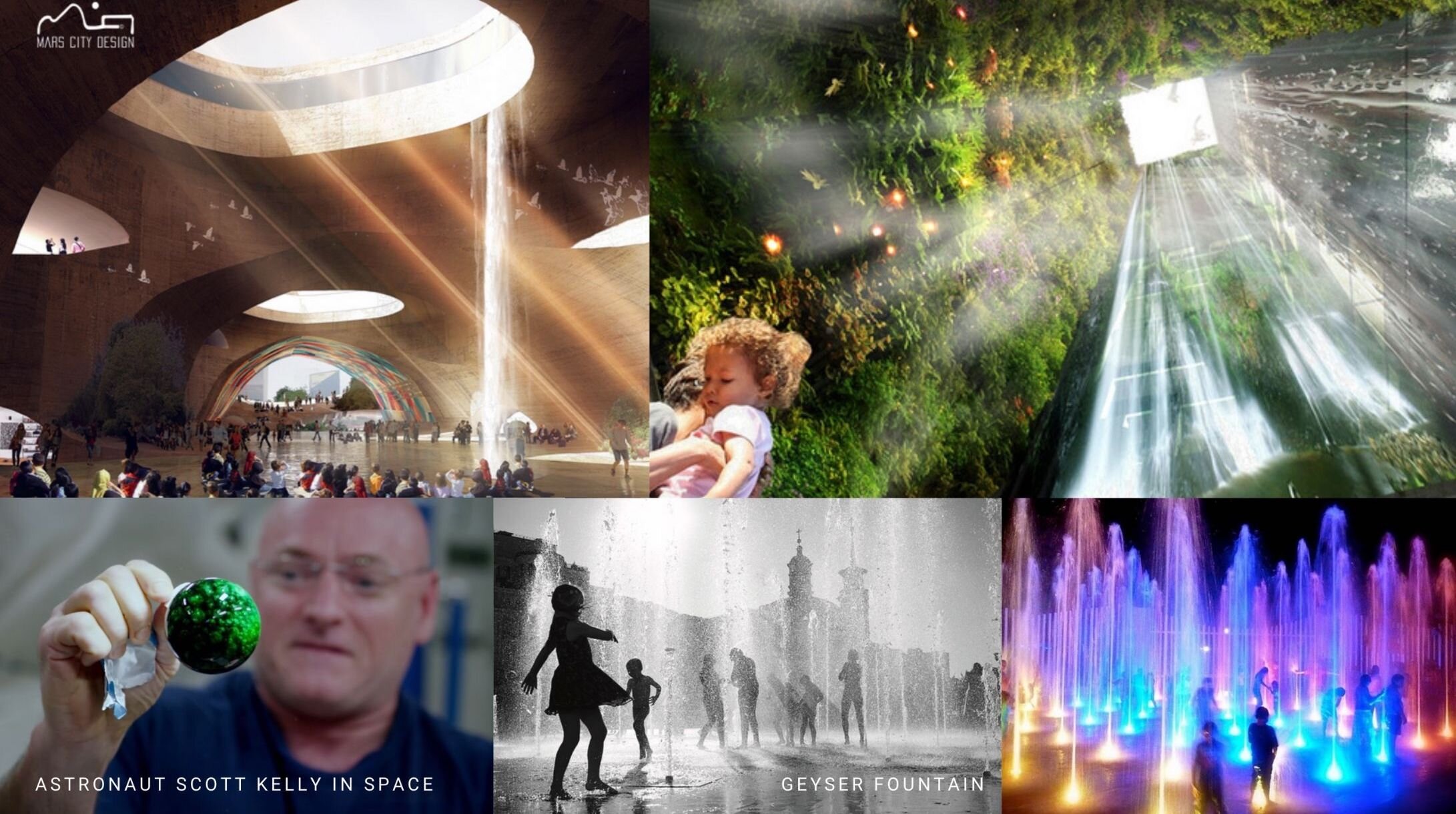Alpha Dune Habitats. ©Mars City Design 2017.
PLANTBASED MATERIALS and 4D STRUCTURES
Our Continuous Research for Mars Habitat Eco-sustainable BioMaterial Solutions. Image ©MarsCityDesign
REUSABLE WATER RESEARCH
Our Continuous Research for Mars Habitat Life Support Systems. Image Courtesy: Séries & Séries, NASA.
A PROTOYPE SIMULATION
THE PURPOSE:
Using plant-base construction materials maybe the key to reduce radiation effects, both on the lunar surface and Martian surface. For Earth application, this solution will be a new way to build, to decelerate climate change.
Other research includes:
The Feature:
Optimizing water recovery system inside the habitat.
The Material:
The Interior wall demonstrates an eco-sustainable plant-base construction materials.
The Structure:
Easy-to-build geometry, practical for payload transport, furthering self-deployable structure technology.
THE ORIGINAL ARCHITECTURAL CONCEPT:
The Moving Dunes.
We discovered while designing a Martian habitat that certain craters on Mars demonstrate how dunes are formed and they move over time. The most relevant phenomena to our human habitat systems is the Barchan Dunes. Some of these dunes are located in the West corner of the greatest canyon, Valles Marineris.
Here is how we stumbled upon this design choice...
In 2016, Christina Ciardullo, Faculty at the Carnegie Mellon University’s Space Architecture Studio, submitted an idea of a Mars habitat design to the Mars City Design Challenge, called Alpha, which is inspired by the Martian Barchan dunes. The concept was developed to respond to the radiation protection and safety standard required for living on the Martian surface.
The concept was then further developed by Mars City Design and partners, and brought to the Top 10 NASA Centennial Challenge 2019 selection, named Alpha 2.0 and Alpha 3.0. In this proposal, while exploring the 3D-Printing technology and the habitat’s eco-sustainable material solution, the structural solutions for Alpha 3.0, included an aerodynamic form of the shell. This form enables the shell to control the maximum weight of the sand deposit, while forming layers and thickness of the sand dune to protect the habitat from cosmic radiation and meteorite impacts.
©2017 Alpha 2.0™ by Mars City Design & Partners (CRP USA, Walter P. Moore, Labtop), Selected as the Top 10 NASA 3D Printed Habitat Challenge Winner 2019.
Today, NASA has named their 3D printed Martian habitat prototype: Mars Dune Alpha:
Credit: NASA 2021
In 2020-2021, the 3D printed demo models are exhibited both in London, the Design Museum and then in Stockholm, Tekniska museum.





